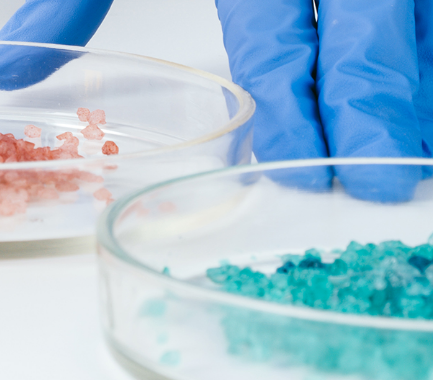Your contact
PENPET-Team - Hamburg

Laurens Rogowski
Sales
Tel. +49 (0) 40 - 675 7 99 80
sales@penpet.de
Get in touch with us.
Methylhexahydrophthalic anhydride (MHHPA)
Methylhexahydrophthalic anhydride (MHHPA) is an organic compound that belongs to the carboxylic acid anhydrides and is important in the chemical industry, primarily as a hardener for epoxy resins. The substance is also used as an intermediate in the manufacture of polyester resins and polyurethane. Methylhexahydrophthalic anhydride gives plastics a high resistance to UV radiation and weathering. Due to this property, the compound is used, among other things, in the production and processing of coatings, adhesives, high-performance LEDs and electrical and electronic components for outdoor use. The production of methylhexahydrophthalic anhydride is based on processes of hydrogenating methyltetrahydrophthalic anhydride.
At PENPET you get methylhexahydrophthalic anhydride (MHHPA) of the highest quality - from a reliable partner who will also meet your requirements in the long term. We look forward to receiving your inquiry for an individual offer. Prompt delivery of the liquid compound can be made in packages with different weights.
CAS no. 25550-51-0
EINECS no. 247-094-1
Molecular formula: C9H12O3
Synonyms: MHHPSA, MHHPA, Hexahydromethylphthalic anhydride, Hexahydromethyl-1,3-isobenzofuranedione, Methylcyclohexane-1,2-dicarboxylic anhydride, 7a-methyl-4,5,6,7-tetrahydro-3aH-2-benzofuran-1,3-dione
Areas of application: Hardener for epoxy resins, plasticizer, raw material for the production of polyurethane and polyester
More Information
Methylhexahydrophthalic anhydride (MHHPA), as an anhydride of hexahydrophthalic acid, is a cyclic but non-aromatic compound. The molecules of the substance consist of the hexagonal ring of phthalic acid, which has lost its aromatic character through hydrogenation, and a second, pentagonal cyclic structure, formed through the dehydration of the two carboxy groups of phthalic acid. In addition, the compound has a methyl radical attached to one of the two carbon atoms that connect the two ring structures.
For a precise naming of the substance, the alternative name methylcyclohexane-1,2-dicarboxylic anhydride is suitable, which expresses the exact structure. Methylhexahydrophthalic anhydride has two isomeric compounds, each with the methyl group attached to a different carbon atom.
Under normal conditions, methyl hexahydrophthalic anhydride (MHHPA) is a colorless, viscous liquid. The compound solidifies on cooling below the melting point of -40 °C and boils at a temperature of 299 °C. The substance is only soluble in water with hydrolysis.
Methylhexahydrophthalic anhydride (MHHPA) is chemically stable when stored as directed. However, the substance can easily crystallize when it comes into contact with humidity. Dissolution in water leads to the conversion of the compound into acids. Methylhexahydrophthalic anhydride is a combustible, but difficult to ignite substance. Harmful gases are produced when the compound is burned. Large amounts of carbon monoxide and carbon dioxide can be released, among other things.
According to the GHS classification, methyl hexahydrophthalic anhydride (MHHPA) is a hazardous substance that poses acute and chronic health risks. The compound causes severe redness, irritation and chemical burns on the skin. Persistent sensitization and allergic reactions are possible. Wetted parts of the body should be cleaned thoroughly with soap and water. If symptoms persist, a medical examination must be arranged. Contact can cause severe and painful eye irritation. The affected eye should be rinsed immediately with water and examined by an ophthalmologist.
Inhalation of methylhexahydrophthalic anhydride vapors or aerosols may cause respiratory irritation, coughing, and asthmatic breathing difficulties. If the substance is swallowed, gastrointestinal symptoms and painful irritation of the mouth, esophagus and stomach may occur. If large quantities are ingested, severe chemical burns of the digestive tract are possible.
Due to possible damage to aquatic organisms, methylhexahydrophthalic anhydride is considered a slightly water-polluting substance that must not get into water bodies, wastewater or the soil. In the event of leakage of larger quantities into the environment, the local authorities must be informed. Methylhexahydrophthalic anhydride is not subject to any special transport regulations.
